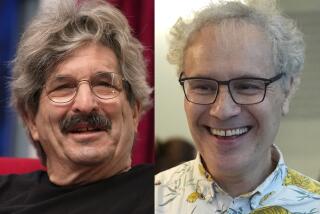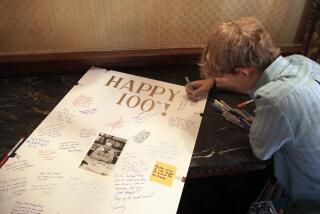Science Teachers Hear Nobel Laureate Speak
- Share via
Science teachers from across Southern California gathered Thursday for a chance to meet Nobel laureate Francis Crick, who discovered the molecular structure of DNA, at a Cal State Northridge function.
Some of the teachers who packed into the university clubhouse to hear Crick speak, such as Richard Buck, who teaches biology at Louisville High School in Woodland Hills, were high school students themselves when Crick and his partners, James Watson and Maurice Wilkins, discovered the now-famous double-helix model of a DNA molecule.
“I took the first molecular genetics class at my university,” said Buck as he lined up to meet Crick. “It’s kind of exciting to meet the guy who came up with all of it.”
Crick delivered a lecture on brain research as the highlight of a celebration honoring the science educators, who are enrolled in a teaching enhancement program at CSUN for which Crick serves as honorary chairman.
The program, headed by Prof. Steve Oppenheimer, is designed to bring together K-12 science teachers with college professors to improve math and science education in elementary and secondary schools.
Margery Weitkamp, a teacher at Chaminade College Preparatory school in West Hills, said that in her eight years in the program she has been able get her students excited about science by using techniques she learned from the classes and workshops at CSUN.
“Some of my students have studied sea urchins, some with plant genetic experiments,” she said. Weitkamp has even set up research projects for her students at CSUN with Oppenheimer.
Crick, now president of the prestigious Salk Institute in La Jolla, gave an address on his current field of research, the workings of the brain, dealing specifically with sight.
In an interview before his lecture, the jolly but refined scientist expressed concern about the current state of science education.
“At the moment, it’s miserable, by and large, compared to what it should be,” Crick said.
He added: “It should be taught in a more interesting way. The children need to be excited by scientific teaching, be thrilled by it and want to do it on their own.”
More to Read
Sign up for Essential California
The most important California stories and recommendations in your inbox every morning.
You may occasionally receive promotional content from the Los Angeles Times.













